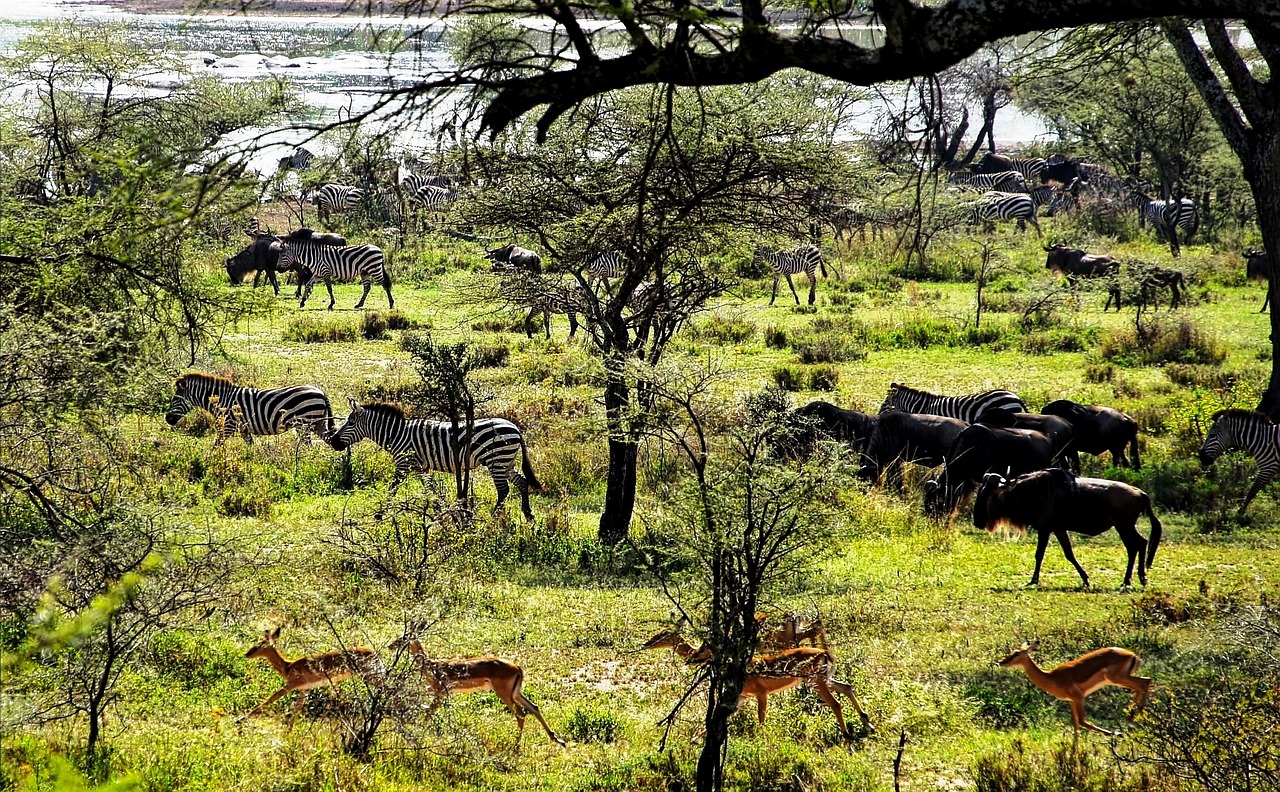When to Visit Serengeti: Best Safari Seasons for Americans

tell us your budget today!
The Serengeti National Park in northern Tanzania is one of Africa’s most iconic and captivating safari destinations, particularly well-known among American travelers seeking authentic wildlife adventures. With its endless golden plains, diverse ecosystems, and abundant wildlife, the Serengeti offers an unmatched safari experience. Timing your visit to this world-famous location is essential to maximize your enjoyment. Whether you’re drawn to the Great Migration, rare animal sightings, or vibrant landscapes, knowing the right season to travel makes all the difference. This article offers an in-depth look at each season to help you decide the best time for your Serengeti safari.
The Dry Season: June to October
The dry season, stretching from June through October, is considered the prime safari period in Tanzania. This season coincides with summer vacation months in the United States, making it convenient for American families and individuals planning extended holidays. The dry season is especially popular due to the increased likelihood of animal sightings, reliable weather, and optimal game-viewing conditions.
Why Visit During the Dry Season?
- Wildlife Visibility: With sparse vegetation and scarce water sources, animals congregate near rivers and watering holes, making them easier to spot. Predators are often seen lurking nearby, creating dramatic encounters that are a photographer’s dream.
- The Great Migration: Between July and October, millions of wildebeest, zebras, and gazelles migrate through the Serengeti to the Maasai Mara in Kenya. Witnessing the river crossings is one of the most awe-inspiring spectacles in the natural world and a highlight for safari-goers.
- Excellent Weather Conditions: Days are warm and sunny with low humidity, providing comfortable conditions for game drives, nature walks, and hot air balloon safaris. Temperatures usually range between 77°F and 86°F (25°C to 30°C).
Considerations for the Dry Season
- High Demand: Because this is peak travel season, accommodations and tours fill up quickly. Early reservations are recommended to avoid missing out on your preferred itinerary.
- Premium Pricing: As demand increases, so do prices. While the experience is unmatched, be prepared for higher costs for lodging, park entry, and private tours.
The Green Season: November to March
The green season, spanning from November to March, brings lush landscapes and a different kind of beauty to the Serengeti. Rain showers rejuvenate the plains, turning them into a vibrant canvas of life. Despite occasional rainfall, this season offers exceptional wildlife viewing and fewer crowds—ideal for travelers looking for a peaceful yet thrilling adventure.
Why Visit During the Green Season?
- Calving and Predator Action: Late January through March marks the wildebeest calving season in the southern Serengeti. Over 500,000 calves are born, attracting a high number of predators and offering heart-pounding action as survival plays out before your eyes.
- Fewer Tourists: With fewer travelers, you’ll enjoy quieter game drives, more personal attention from guides, and a deeper sense of connection to nature.
- Photographic Paradise: The lush greenery, dramatic skies, and abundance of newborn animals make this season a paradise for photographers and nature lovers alike.
Considerations for the Green Season
- Rainfall: Although rains are typically short and occur in the afternoon or evening, they can make certain areas muddy and difficult to access. Experienced guides and 4x4 vehicles are essential.
- Health Precautions: This season has a higher mosquito population, so taking anti-malarial medication and using insect repellent is advisable for all travelers.
Should You Visit During the Shoulder Seasons?
Shoulder seasons, which include April to early June and late October, are often overlooked but can be an ideal time for a safari. These transitional months provide the benefits of both the dry and green seasons and are perfect for travelers seeking value and solitude.
Why Visit During Shoulder Seasons?
- Attractive Prices: Tour operators and lodges frequently offer discounted rates, making this a budget-friendly option without sacrificing quality.
- Dynamic Animal Movements: Wildlife activity is still abundant as animals transition between seasonal habitats. This makes for exciting and unpredictable game drives.
Considerations for Shoulder Seasons
- Variable Weather: While conditions may be wetter, particularly in April and May, there are still plenty of clear days suitable for safaris. Some remote camps may close, but major routes and popular parks remain accessible.
Conclusion: Best Time for American Travelers
Choosing the best time to visit the Serengeti ultimately depends on your interests, budget, and travel goals. For those wanting dramatic animal encounters and iconic scenes like the Great Migration, the dry season from June to October is unbeatable. Travelers looking for lush scenery, fewer tourists, and the thrill of predator-prey interactions will appreciate the green season from November to March. Meanwhile, shoulder seasons offer a blend of both with added savings. Whatever time you choose, Prehemy Tours is ready to craft a personalized safari itinerary that meets your needs and ensures a once-in-a-lifetime adventure in Tanzania’s legendary Serengeti.
How to Book a Safari
Prehemy Tours offers fully customizable safari experiences with expert guides, handpicked lodges, and seamless planning. Share your travel dates and interests, and we’ll design your dream safari in Tanzania.
📧 Email us | 📞 WhatsApp Now
visit our website
